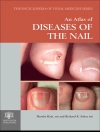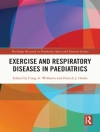A critical examination of an increasingly vital role in surgical practice
Surgical first assistants (SFAs) are registered nurses or operating department practitioners (ODPs) who play a crucial role in the operating theatre during surgical procedures. Under the direct supervision of the operating surgeon, an SFA provides continuous skilled assistance, performing a range of established responsibilities to assist the surgeon predominantly in the intraoperative phase of the patient’s journey, but also in the pre- and post-operative phases. The role affords theatre nurses and ODPs the opportunity to expand their clinical responsibilities and provide assistance for patients undergoing surgery by undertaking post-qualifying education. More recently, an understanding of the knowledge and skills of the SFA role has been embedded into the undergraduate curricula for ODPs.
Surgical First Assistant: The Essentials of Practice provides a comprehensive and critical examination of the knowledge, skills and behaviours that are required by SFAs to ensure patient safety and quality care. Beginning with a historical overview of the SFA role, it proceeds to outline the legal, ethical and professional aspects of the role which allows the practitioner to critically reflect on SFA practice. It also offers an in-depth analysis of the SFA’s responsibilities as defined by the Perioperative Care Collaborative through each phase of the patient’s perioperative journey from pre-operative assessment to post-operative pain management.
Surgical First Assistant readers will also find:
- A text aligned with UK national standards and best practice
- Detailed discussion of topics including pre-operative preparation with the operating theatre, assisting with haemostasis, and many more
- An approach which explores both the technical and non-technical skills required by the SFA
Surgical First Assistant is ideal for registered nurses, ODPs, student and apprentice operating department practitioners.
Daftar Isi
List of Contributors xi
Foreword xiii
Preface xv
Acknowledgements xvii
Part I Essential Concepts of Surgical First Assistant Practice 1
Chapter 1 The Historical Context of the Surgical First Assistant 3
Julie Quick and Mark Owen
The Role of the Non-Medical Surgical Assistant During Conflict 3
Lewin’s Report 4
Certification 5
National Accreditation 5
National Association of Assistants in Surgical Practice 6
Call for Clarity Over Names 7
A National SFA Toolkit 8
Accredited University Courses 8
The Responsibilities of the SFA 9
References 10
Chapter 2 Ethical, Legal and Professional Considerations of the SFA Role 13
Mark Owen and Julie Quick
Autonomy 14
Beneficence 14
Nonmaleficence 14
Justice 14
Case Studies 14
Scenario 1 14
Signpost 16
Scenario 2 16
Signpost 17
Scenario 3 17
Signpost 18
Scenario 4 18
Signpost 19
References 19
Part II The Perioperative Role of the SFA 21
Chapter 3 Preoperative Assessment 23
Jenny Abraham
Preoperative Assessment 24
Patient Education 26
Venous Thromboembolism Risk Assessment 29
Tissue Viability 30
Patient Mobility 31
Ward Preparation – Patient Fasting 31
Fasting Instructions for Adult Elective Surgery Patient 31
Fasting Instructions for Adult Emergency Surgery Patient 31
Fasting Instruction for Children 32
Surgical Site Marking 32
Decision-Making and Informed Consent 33
References 35
Chapter 4 Pre-operative Preparation of the Patient Within the Operating Theatre 41
Dave Lawson
Introduction 41
Team Brief 42
Timeout 43
Patient Positioning 43
Skin Preparation 45
Chlorhexidine Gluconate 45
Povidone-Iodine 45
Draping the Patient 46
Conclusion 47
References 47
Chapter 5 Assisting with Surgical Incisions and Wound Closure 49
Carolina Britton
Surgical Incisions 49
Before Knife-to-Skin 49
Site and Length of Incision 51
Choice of Instruments for Surgical Incision 52
Minimally Invasive Surgery 53
Skin Marking 53
Common Types of Surgical Incisions 54
Assisting with the Surgical Incision 55
Wound Closure 55
Types of Surgical Wounds 56
Wound Healing 56
Wound Closure 57
Techniques for Skin Closure 58
Suturing 58
Other Closing Devices 58
Assisting with Wound Closure 58
Closing a Surgical Wound 59
Wound Drainage 60
References 61
Chapter 6 Assisting with Haemostasis During Surgery 65
Georgina Lewis
Introduction 65
Pressure 66
Suction and Visual Access 67
Sutures 67
Clips and Ties (Arterial Clamps) 67
Single Use Clips 69
Surgical Stapling Devices 69
Diathermy 69
Ultrasonic Devices 71
Laparoscopic and Haemostasis 72
Pharmacological Methods And Haemostatic Agents 72
Conclusion 73
References 73
Chapter 7 Tissue Handling and Retraction 77
Lee Rollason and Julie Quick
Introduction 77
Tissue Viability Assessment 78
Tissue Types 78
Skin 78
Adipose Tissue 78
Muscle 79
Organs 79
Vasculature and Nerves 79
Bone 79
The Responsibilities of The Sfa 80
Handling of Tissue 80
Types of Retractor 81
Retraction by Hand 81
Hand-Held Retractors 82
Self-Retaining Retractors 82
Implications of Tissue Handling And Retraction 83
References 83
Chapter 8 Instrument Handling for the Surgical First Assistant 87
Susan Hall and Mark Robertshaw
Introduction 87
The Use of Handheld Retractors 88
Retracting Away from Oneself 90
Retracting Towards Oneself 90
Tissue Forceps 90
Skin Hooks 91
Handling Artery Forceps 91
Suture Scissors 92
Minimal Access Surgery 95
Other Instruments Requiring Consideration 96
The Practitioner with Extended Skills 97
Toothed Dissecting Forceps 97
Needle Holders 98
References 98
Chapter 9 Wound Management 99
Julie Quick and Mark Owen
Introduction 99
Acute and Chronic Wounds 100
Wound Healing 100
Phase 1 101
Phase 2 101
Phase 3 101
Phase 4 101
Haemostasis 101
Inflammation 101
Proliferation 102
Remodelling/Maturation 102
Local Factors 103
Systemic Factors 103
Biopsychosocial Factors 104
Wound Care 104
Patient Education 105
Wound Assessment 105
Anatomic Location and Type of Wound 105
Degree of Tissue Damage 106
Wound Bed and Edges 106
Wound Size and Peri-wound 106
Signs of Infection 106
Pain 107
Dressings 107
Self-Adhesive Absorbent Dressings 107
Soft Paraffin Gauze 107
Alginates 108
Negative Pressure Wound Therapy 108
Conclusion 108
References 108
Chapter 10 Pain Management 111
Felicia Cox and Nisha Bhudia
Introduction 111
Defining Pain 111
Classifying Pain 112
Assessing Pain 114
Tools 115
Pain Assessment Questions Using PQRST 115
Example of a Functional Activity Scale 116
Managing Pain 116
Approaches to Analgesia 117
Unrelieved Pain 117
Role of the Inpatient Pain Management Service 117
Patient Education 118
Analgesic Medicines 118
Multimodal Analgesia 118
Paracetamol 118
Opioids 119
Gabapentinoids 120
Alpha-2 Agonists: Clonidine and Dexmedetomidine 121
Ketamine 121
Local Anaesthetics 121
Nerve Blocks 122
Neuraxial Analgesia 122
Fascial Plane Blocks 122
Conclusion 123
References 123
Part III Human Factors and Non-technical Skills 127
Chapter 11 Human Factors 129
Ally Ackbarally
Introduction 129
Implications of Human Factors 130
Patient Safety In Surgery 133
Human Error 134
Patient Safety Incident Response Framework 136
SFA’s well-being 136
Conclusion 137
References 137
Chapter 12 Non-technical Skills 141
Mandy Mangham and Julie Quick
Introduction 141
Classification of Non-technical Skills 142
Situation Awareness 142
Communication and Teamwork 143
Task Management 145
Leadership and Decision-Making 145
Managing Stress and Fatigue 146
References 146
Index 151
Tentang Penulis
Julie Quick, MSc, NMP, SCP, RN, is Senior Lecturer in Operating Department Practice at Birmingham City University, Birmingham, UK.
Mark Owen, SFA, ODP, is Senior Lecturer in Operating Department Practice at the University of Gloucestershire, Cheltenham, UK.












